Identify woodland birds on the go
Keep our pocket-sized identification guide to hand on your next walk.
Buy yours now
Content manager
Every spring, trees and shrubs across the land burst into a riot of song from a famously musical group of birds: the warblers. Here we get to grips with their songs and learn a few tricks to help tell them apart by sound alone.
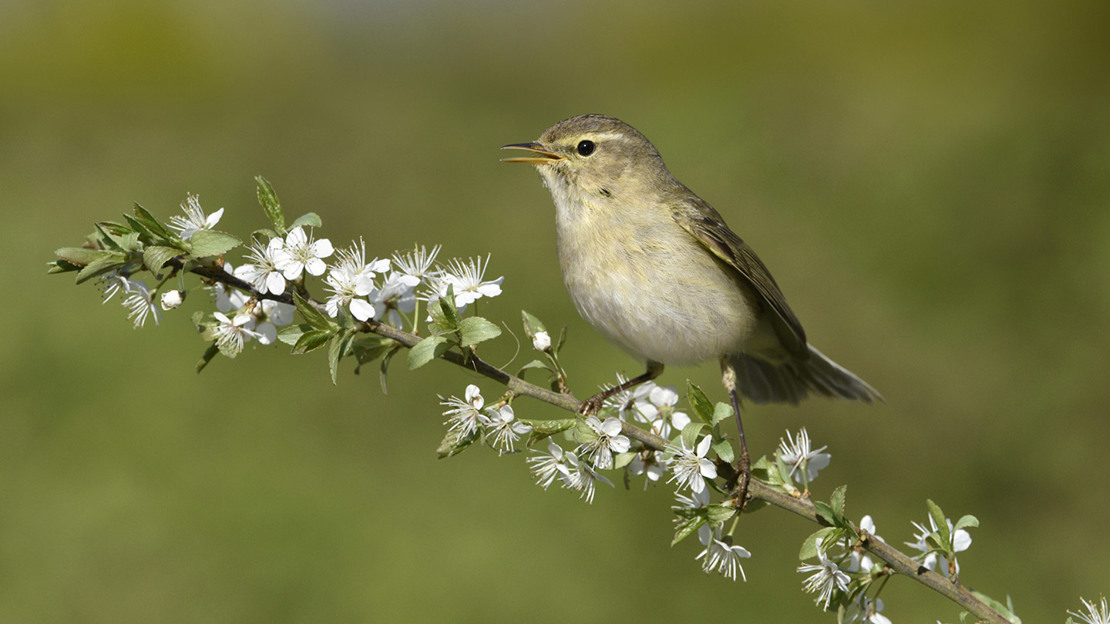
The chiffchaff says its name with a lively, repeated 'chiff-chaff, chiff-chaff, chiff-chiff-chaff'. It's the perfect warbler for beginners and should be difficult to mistake for anything else!
Contact calls between pairs are short 'it' sounds.
Begins singing as early as February after returning to the UK (although it's thought some no longer migrate over winter).
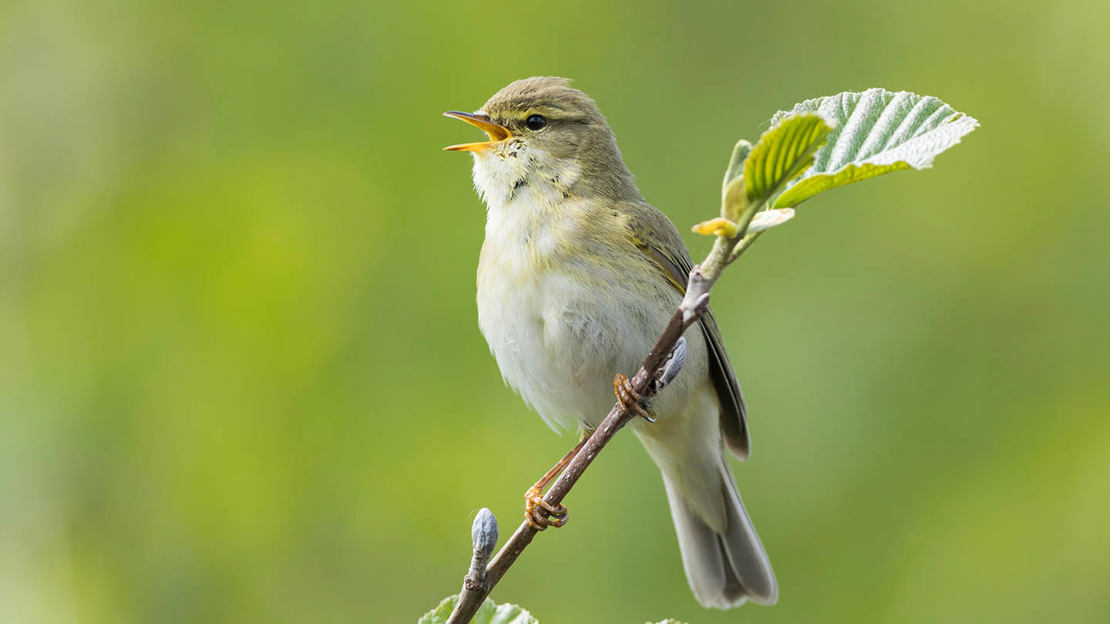
The willow warbler has a melancholy, descending song of falling notes. Think of water cascading over a tall waterfall, or perhaps a penny dropping between the pins of a penny arcade machine.
Soft 'hoo-eet' sound.
Listen for them from late March and early April once they've returned from sub-Saharan Africa.
Keep our pocket-sized identification guide to hand on your next walk.
Buy yours now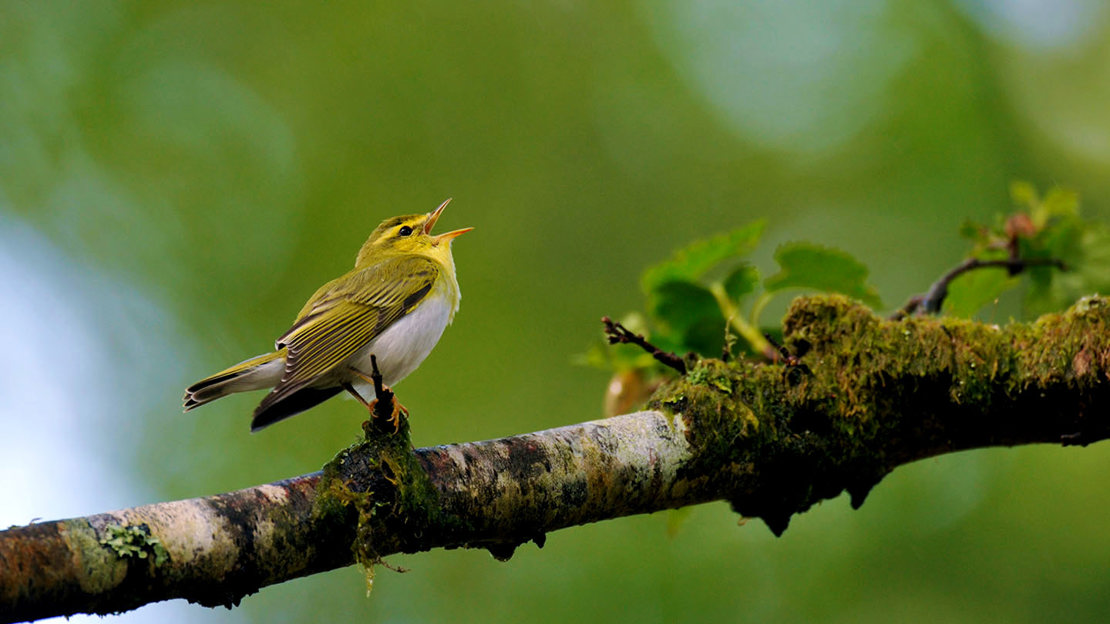
The wood warbler is often said to sound like a coin spinning on a glass table top, with rapid 'zip' notes accelerating into a trill and then coming to a sudden stop.
Contact call is a sharp 'zip' sound.
Heard singing in upland oak woods and temperate rainforest, particularly in Wales and western parts of Scotland, from April to August.
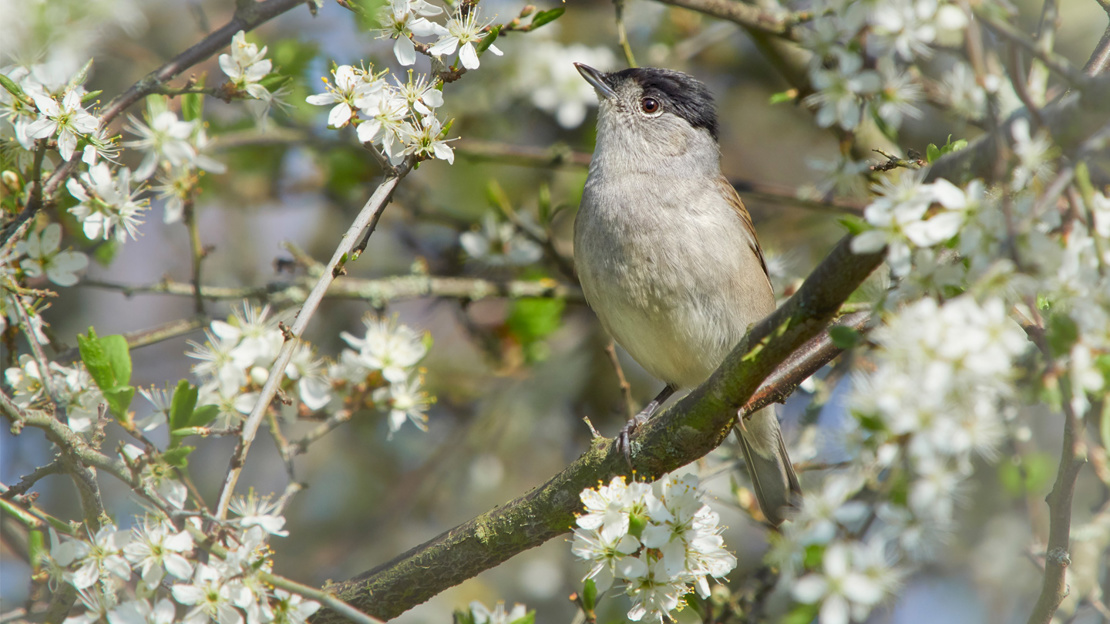
The blackcap is nicknamed the northern or mock nightingale as its pretty song rivals that more famous fellow songbird.
The blackcap has a sweet, fluting warble which begins with chattering sounds and ends with more melancholy notes. In some ways it resembles the rich, fruity tones of blackbird song but is not so slow and relaxed. Obvious pauses between snatches of song help distinguish it from the more elusive garden warbler (below).
A hard 'teck' sound sometimes given in rapid succession. Sounds a bit like two stones being clicked together.
Unlike some of its shyer cousins, this warbler is usually happy to sing from more exposed perches. Listen from April and throughout the summer.
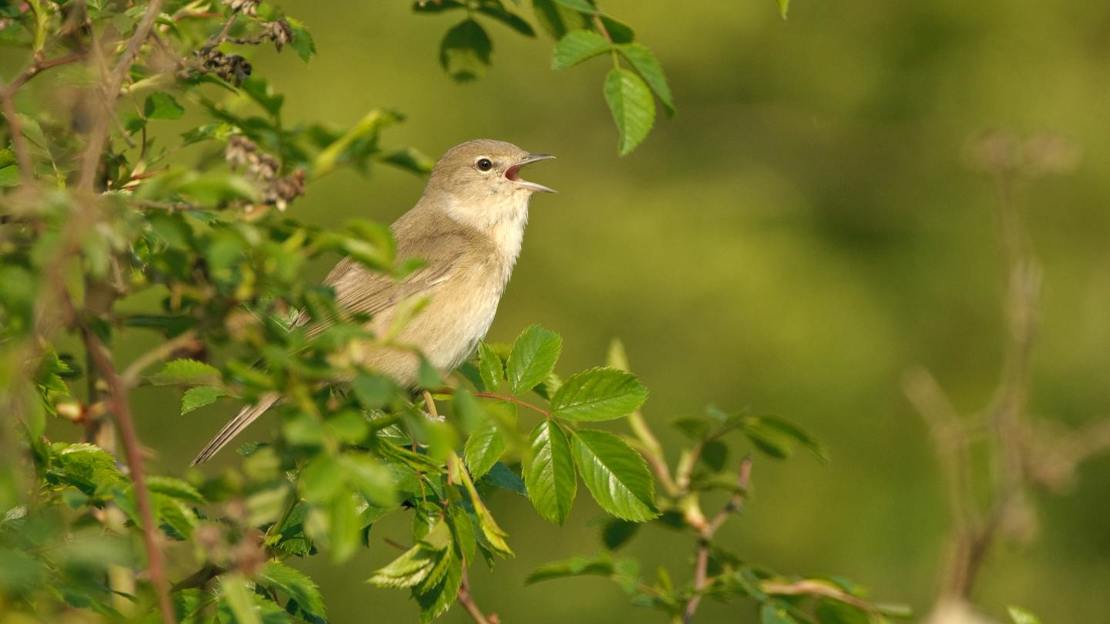
A hurried, sometimes scratchy song. Can be mistaken for that of the blackcap (above), but usually continuing on without a break and often delivered more softly. Listen for a series of rapidly changing notes that wander up and down, a bit like a babbling brook.
Produces a series of nasal 'chek-chek-chek' sounds when alarmed.
Usually arrives back in the UK slightly later than the blackcap. Keep your ears cocked in woodland with thick understorey and bushes between April and July.
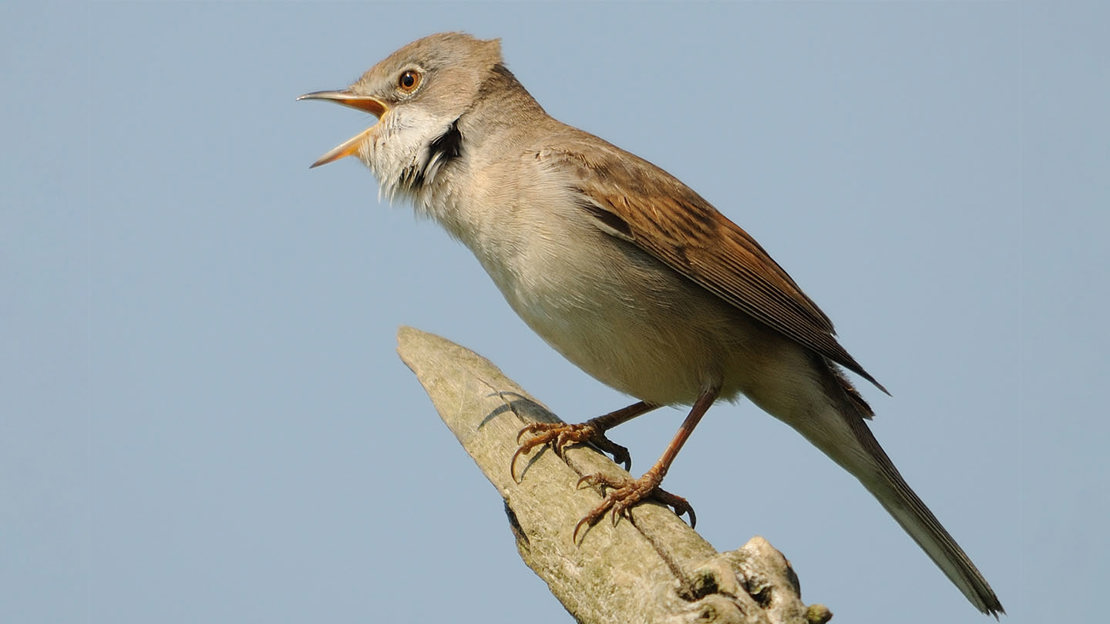
The whitethroat has a distinctively scratchy and jolting song. Phrases are short, chattery and hurried, with fairly short pauses between them. The similar-looking lesser whitethroat (below) sounds very different.
Described as a hoarse, nasally sound that is drawn out when alarmed.
Listen around woodland edges or in scrubby areas from May.
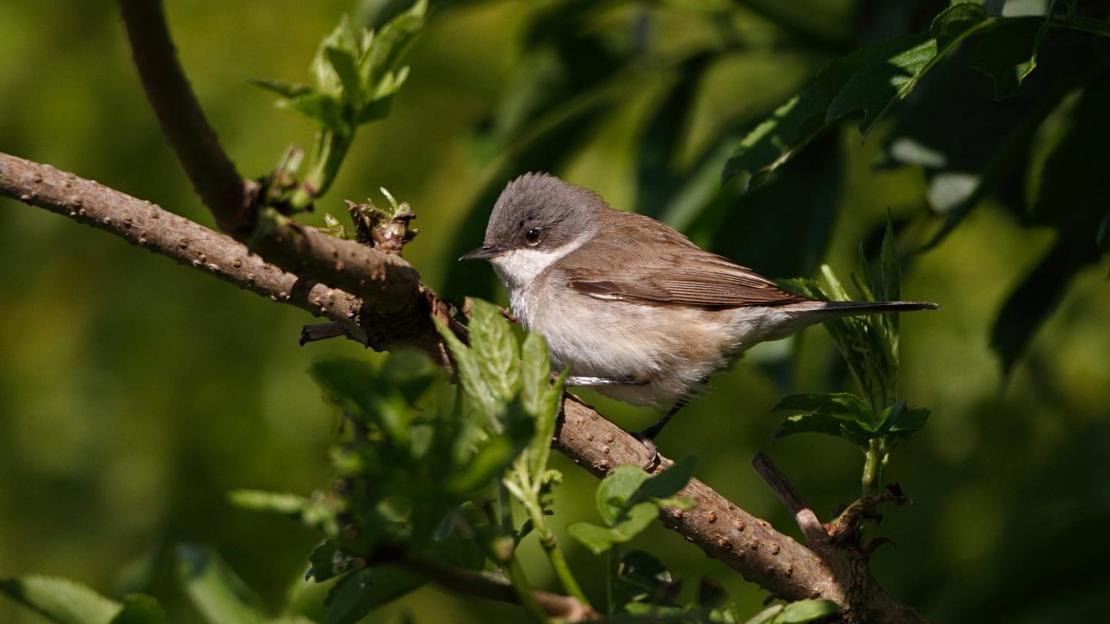
Despite being similar in appearance to the common whitethroat (above), the lesser whitethroat has a completely different repertoire. You'll also be lucky to catch sight of the singer! Listen for a rapid, sweet rattle coming from deep within thick shrubbery.
A quiet, clicky 'tack' sound.
Thick hedgerows and scrub are this bird's favourite nesting habitat. Males will start declaring ownership from late April.
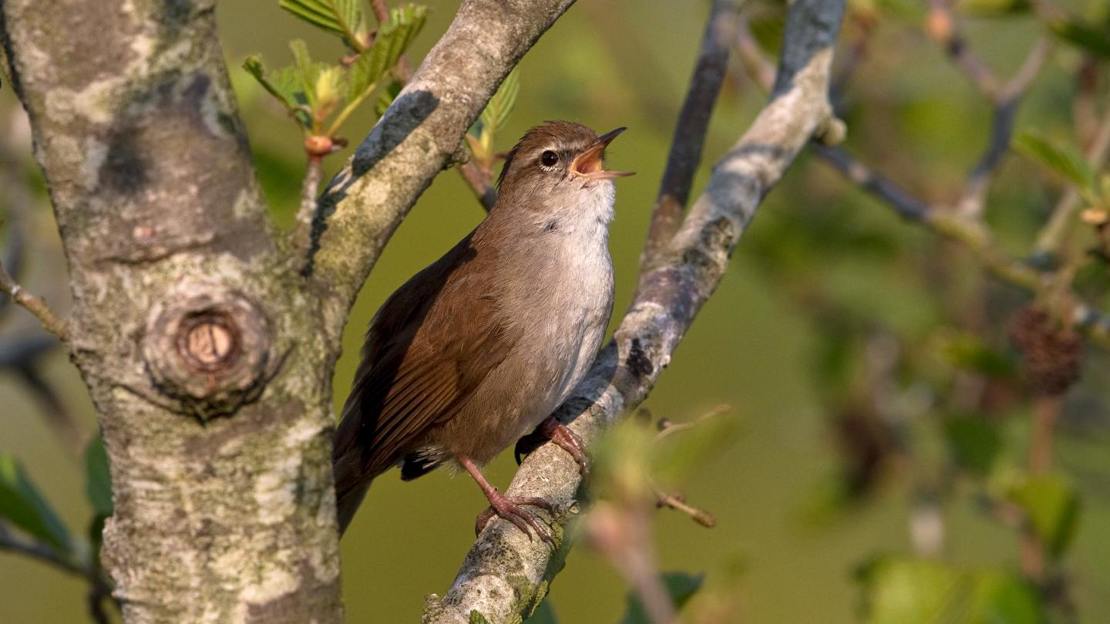
It's not just male Cetti's warblers that sing - females join in too.
A loud, explosive but short burst of song, usually delivered from deep among thick shrubbery. The first few notes are almost halting, followed by a more confident, clanging series.
Usually a loud, repeated 'plit' which has something of a metallic quality to it.
Unlike most of the other warblers on our list, this species stays in the UK year round. Listen for it in scrubby habitats, especially near water, in the south and east of England. Most likely to be heard during the breeding season, but you may even hear snatches of song in winter.
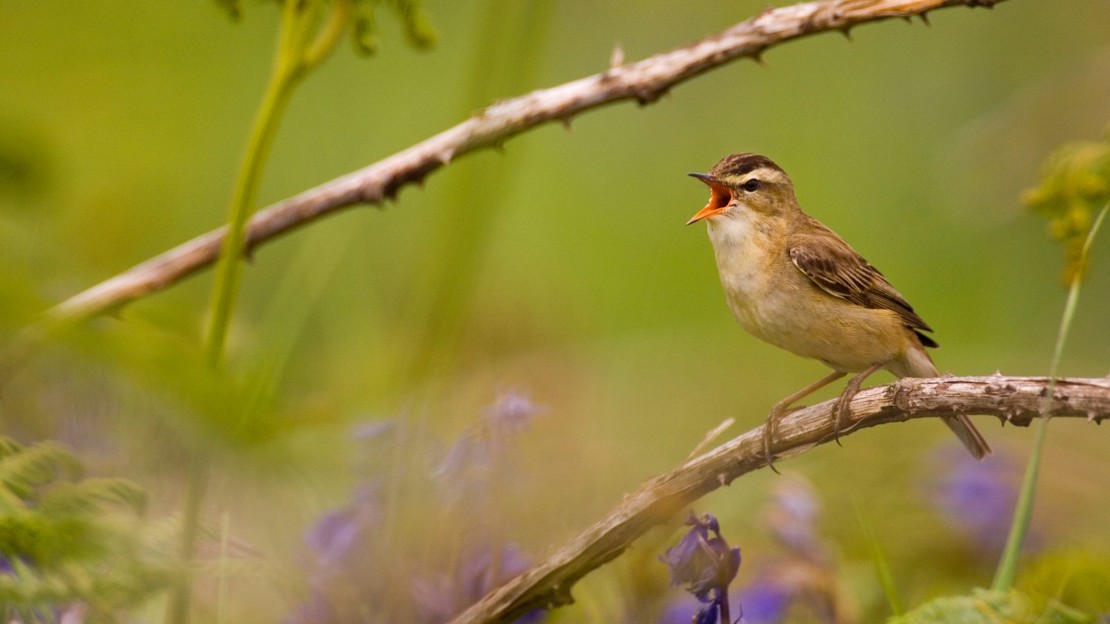
Can be difficult to separate from the reed warbler (below). Sedge warblers produce a long, loud and excited song of rapidly changing jerky notes and some trills. Can be described as harsher sounding and more staccato than the reed warbler.
A drawn-out 'err' or sharper 'tsek' sound when alarmed.
Usually arrives back in the UK a bit earlier than the reed warbler. Listen around water and reedbeds from mid-April.
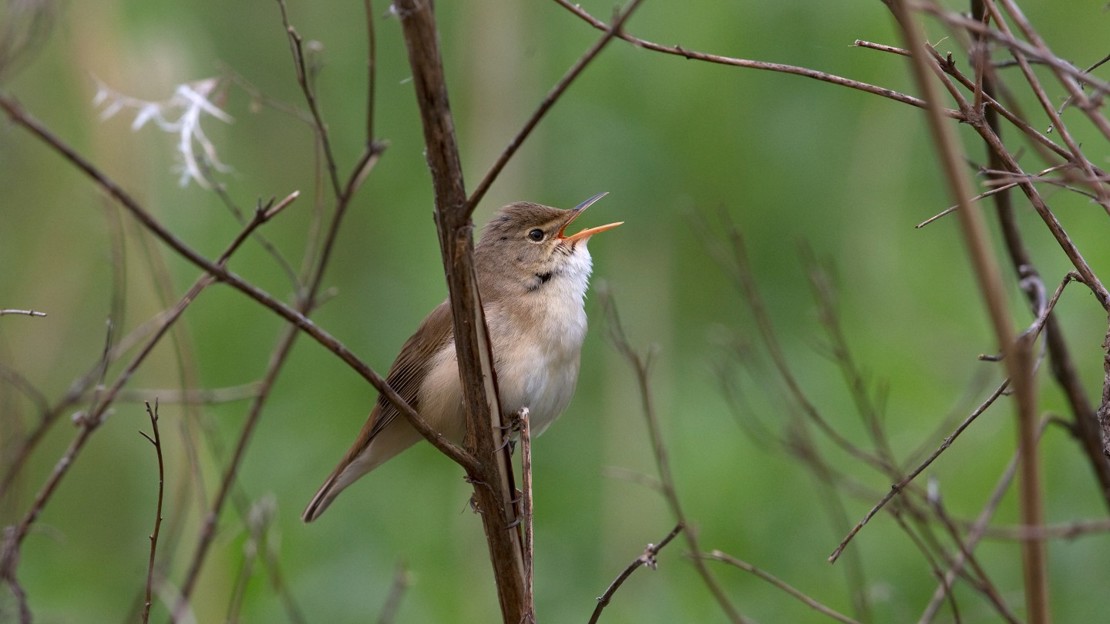
More melodious than the sedge warbler (above) and while jittery the pace is somewhat slower. Listen out for notes repeated two or three times in succession in a continuous song.
A hard 'chk' sound.
Listen on wetlands and around reedbeds towards the end of April.
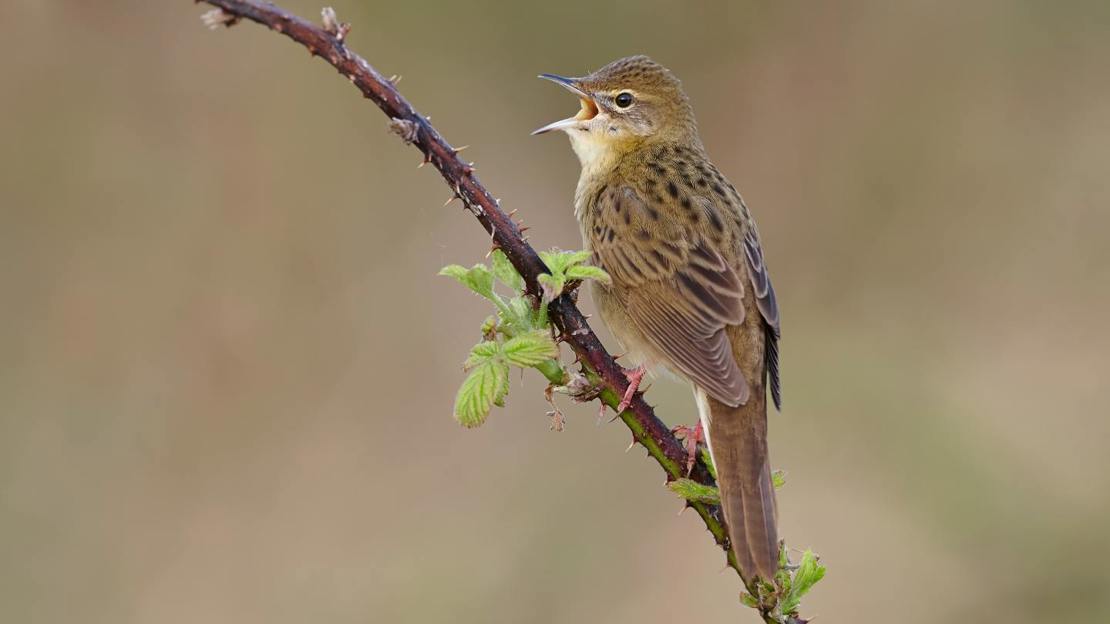
This bird really does live up to its name! Its song should be difficult to confuse with that of another warbler but might be mistaken for its insect namesake. Listen for a continuous, gentle, reeling whirr.
Call is sharp and piercing when alarmed, otherwise a drawn out trill.
Arrives in the UK from May. For best results take a young pair of ears with you when you search for this elusive mimic. Older adults may no longer be able to detect its song (or the songs of real grasshoppers and crickets) as we lose our ability to hear the same range of sounds as we mature.
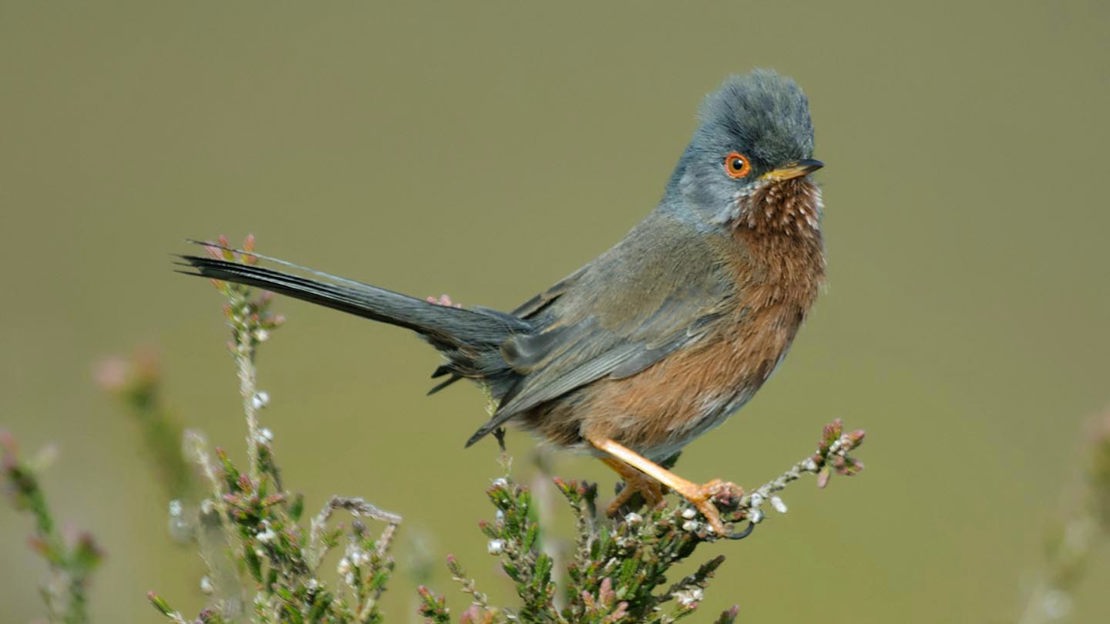
Listen for short, erratic bursts of song with fast-paced rattling and some whistling notes.
Produces a churring sound when alarmed.
Dartford warblers are resident in parts of southern England and East Anglia all year round, usually on coastal heathland. Listen for singing during the breeding season from April.
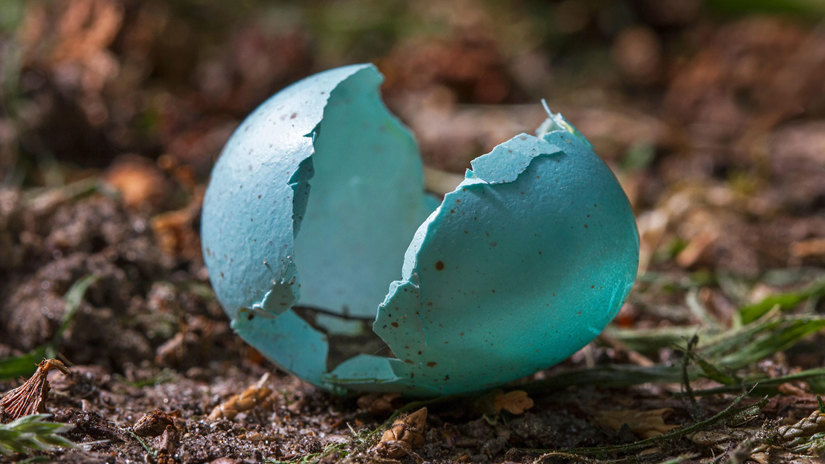

Wildlife is all around us, from sights and sounds to tracks and trails. Discover what's out there all year round with our identification guides.